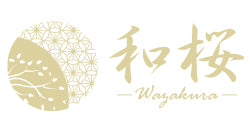The legendary Six Ancient Kilns of Japanese Pottery

What are these legendary six ancient Kilns you wonder ? Let's take you with us through Japanese history and art of pottery.
HISTORY OF THE SIX ANCIENT KILNS
The Six Ancient Kilns is a collective term originated from Japan that refers to six distinguished kilns which originated from this country. It is a type of oven used for different craftmanship process. Kilns high temperature allows various processes such as clay hardening for example. They have been used for millennia to turn objects made from clay into pottery, tiles and bricks.
The term come from a historic ceramics scholar named Fujio Koyama, in 1948. Originated from different places around Japan, they each have their unique style. The Six Ancient Kilns were designated as Japan Heritage sites in 2017.

Shigaraki (信楽)
Bizen (備前)
Tanba (丹波)
Echizen (越前)
Seto (瀬戸)
Tokoname (常滑)
But what makes these kilns unique ?
Even today, each region still specializes in its kiln's pottery type, boasting over 1,000 years of history and cultural heritage.
Some pottery techniques even date back to the prehistoric Jomon period (c. 14,000-300 BCE), and are still preserved to the present day. The golden period for production spans from Heian to Azuchi-Momoyama Period.
Heian period coincides with Middle Age in Europe and part of Tang to Song Dynasty in China (794-1185).
Azuchi-Momoyama Period ran to 1573 to 1603. This relate to late Renaissance to early modern days in Europe and part of the Ming Dynasty in China.
The Six Ancient Kilns of Japan uniqueness resides in that it uses an entirely Japan-made technique. Unlike modern kilns at Hagi, Karatsu, Arita, Takatori, and Satsuma, influenced by Chinese and Korean techniques.
These six Japanese styles formed the foundation of the Japanese domestic ceramics industry, each having their owns specificities.

- Tokoname (常滑) : Located in Aichi Prefecture and the largest production site of the six. It was also used as inspiration for others style. Tokoname style uses a clay rich in iron, giving it rich colors and a certain strongness. Tokoname traditional kilns used to produce large pots and jugs by using a unglazed method called "yakishime". It is well-known for its high-quality and durable bonsai pots.(See our collection)

- Bizen (備前) : Bizen ware traces its roots back to Sue ware, an unglazed pottery first made in Western Japan in the 5th century. Bizen pottery is known for its hardness, reddish-brown color, and absence of glaze, relying on the natural ash glaze created during firing. It originated from Okayama Prefecture and began its commercial production by the late 12th century.

- Seto (瀬戸) : Seto ware is based on the medieval Sanage ware, a tradition originating from Aichi. It is characterized by a beautiful white unglazed surface, similar to the Chinese celadon and white porcelain. It is also known for its wide variety of glazes and shapes. From its early roots until today, Seto ware adapted to meet the needs of the era and the changing lifestyles of people. Seto pottery and ceramics are so famous in Japan, that the generic word for ceramics in Japanese is called "setomono" which directly translate to "things of Seto". The commercial production began by the late 12th century.

- Echizen (越前) : Known for its robustness and simple unglazed aesthetic, it was inspired by Tokoname early style. Echizen ware emerged in Fukui Prefecture during the 13th century. Its finish has very dense, fine grains and strong tenacity, which allows for delicate molding.

- Tanba (丹波) : It emerged around the 12th to 13th century soon after Echizen, in Hyogo Prefecture. Tamba ware has never been confined to a particular technique or process. Rather, it has been flexible to the demands of each era. Tamba ware has a very unique signature. Its outstanding finish, with a bright natural glaze made from ash applied when firing.

- Shigaraki (信楽) : It emerged in the same period as Tanba, soon after Echizen, in Shiga Prefecture. Shigaraki ware is famous for its use of coarse and sandy clay that gives a unique texture and appearance. It leaves the pots unglazed or minimally glazed to highlight the natural beauty of the clay. (See our collection)
All of six of the ancient kilns benefited from the availability of high-quality clay available near near their production sites. The production of this pottery remains a flourishing traditional craft industry in each region at these days. These six ancient pottery areas adapted to modern demand in their own ways, while keeping their traditional roots and knowledge.
But these kilns are not only significant within Japan. They also hold an important place in the world history of ceramics.
Learn more with these articles:
